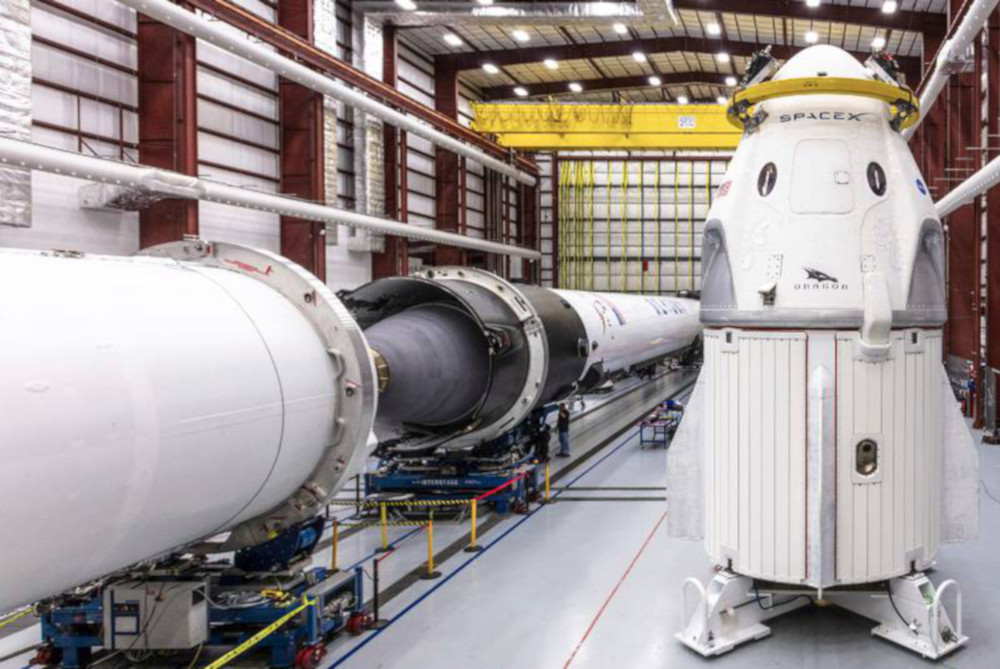The Canadian Space Agency has an awful lot riding on a rocket launch this Wednesday as it aims to send three satellites worth $1 billion into orbit.
The “synthetic aperture radar” satellites, designed to provide high-resolution images of the Earth’s surface even at night and through clouds, will be inserted into low orbit from Vandenberg Air Force Base in California on board a SpaceX Falcon 9.
The satellites will serve as the eyes of the Canadian Armed Forces: identifying and tracking ships along Canada’s three coasts; measuring the extent, thickness and density of sea ice in the Arctic; and supporting disaster relief efforts at home and abroad.
Observers of the launch will notice that the rocket is covered with soot. That’s because the largest part of the rocket, the “first stage,” has already been to space and back, carrying a test version of SpaceX’s Crew Dragon capsule to the International Space Station earlier this year.
Why, you might ask, is the Canadian Space Agency using a secondhand rocket to launch this country’s most expensive and important satellites?
The answer is simple. A pre-flown rocket is cheaper and safer than a brand new one.
When the Canadian Space Agency signed the initial launch contract with SpaceX in 2013, the company was still two years away from its first successful rocket re-landing. The plan, therefore, was to use a new rocket to launch RADARSAT Constellation.
By 2017, however, it was clear that a major technological revolution was underway. The whole point of rocket reusability is cost-saving, since each Falcon 9 first stage has as much advanced technology on board — and costs about the same — as a brand-new Boeing 787 Dreamliner, which sells for more than US $250 million.
Imagine how expensive it would be to fly to Europe or Asia if airplanes were disposed of after just one flight.
By pioneering reusability, SpaceX has radically lowered the financial barriers to space.
For example, world-wide 5G connectivity via thousands of satellites in low Earth orbit is suddenly a foreseeable option. Indeed, SpaceX launched the first 60 of its Starlink broadband satellites on a single Falcon 9 last month.
The first stage of that rocket was making its third flight, and will be used again.
Reusability has already made SpaceX the dominant player in the commercial launch market for satellites. The company can easily underbid its competitors, which include the Russian and Chinese space agencies, while still making a healthy profit.
This explains why SpaceX is now valued at US $33.3 billion. It is also why the company can offer discounts for customers willing to use a pre-flown rocket.
The offer of a discount would have been attractive for the Canadian Space Agency, which has seen its already small budget reduced by half over the last decade. Even the vastly better funded U.S. military is taking advantage of the cost savings provided by pre-flown SpaceX rockets.
As for safety, controlled explosions of millions of litres of kerosene and liquid oxygen will never be entirely risk-free. To date, SpaceX has lost four of its 74 payloads.
However, only one of those failures — back in 2012 — was due to a problem with the first stage.
Several failures have occurred during re-landings, but only after successful satellite deployments. Even then, the record is still impressive, with the rockets sticking 40 out of 47 landing attempts.
Most important, no first stage has ever failed after its initial flight. And when you think about it, this makes sense. Manufacturing mistakes are most likely to appear the first time that a piece of equipment is put under serious stress.
Would you feel safer flying in an airplane during its first flight, as opposed to its second or third flight?
It helped that the Canadian Space Agency already had a relationship with SpaceX. In 2013, it became SpaceX’s first commercial customer, and only the second customer after NASA, when a Canadian communications and science satellite was launched into orbit on an early non-re-landable version of the Falcon 9.
It therefore came as no surprise when, in 2017, the Canadian Space Agency altered the RADARSAT Constellation launch contract with SpaceX and received a discount in return for agreeing to use a pre-flown rocket.
Pictures of RADARSAT Constellation on the launch pad will be all over the media this week. Some people will wonder why the bottom two-thirds of the tall white rocket is covered with soot; a few might question why the Canadian Space Agency is using a secondhand rocket for such an important and expensive mission.
Now here’s the thing: SpaceX could scrub the soot off between flights, but chooses not to do so.
Its presence signals that a technological revolution is underway, supported by savvy customers like the Canadian Space Agency. ![]()
Read more: Science + Tech
















Tyee Commenting Guidelines
Comments that violate guidelines risk being deleted, and violations may result in a temporary or permanent user ban. Maintain the spirit of good conversation to stay in the discussion.
*Please note The Tyee is not a forum for spreading misinformation about COVID-19, denying its existence or minimizing its risk to public health.
Do:
Do not: